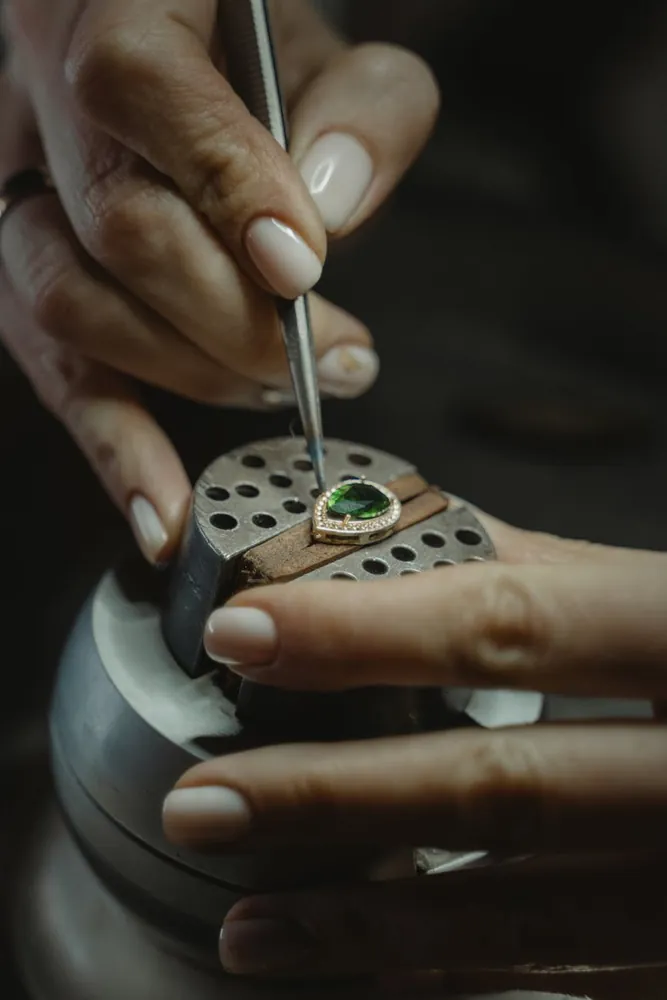From Concept to Creation: The Crafting of Unique Bespoke Jewelry

The Art of Bespoke Jewelry
Bespoke jewelry represents the pinnacle of personal luxury. Each piece is not just an accessory but a narrative, capturing the essence and stories of those who wear it. The journey from concept to creation involves a deep collaboration between artisan and client, ensuring the final product is as unique as its inspiration.
Understanding Client Desires
The bespoke process begins with an in-depth consultation to understand the client's desires. This initial phase is crucial, as it sets the tone for the entire project. Artisans often start with questions such as:
- What event or milestone does the piece commemorate?
- Are there personal symbols or motifs that should be incorporated?
- What materials and gemstones do you prefer?
For example, a client may wish to transform a family heirloom into a modern piece that retains sentimental value while reflecting current fashion trends.
Design Development
With insights gathered, the artisan sketches initial designs. These sketches are a tangible representation of the client's vision. Using tools like CAD (Computer-Aided Design), jewelers can offer realistic previews before any material is altered, allowing clients to provide feedback and request modifications.
Case Study: Transforming a Legacy
A notable project involved a couple wanting wedding bands that integrated elements from their respective families' traditions. The designer created interlocking rings symbolizing unity and continuity, featuring engravings of family crests and incorporating birthstones representing lineage.
Selecting Materials
The choice of materials is critical in bespoke jewelry. Factors influencing this decision include durability, color preference, and budget. Artisans educate clients on different metals—such as platinum, gold, or titanium—and gemstones' qualities, ensuring informed decisions.
A rare gemstone might require sourcing from specific regions, introducing an element of exoticism and rarity into the design. Ethical considerations are also paramount; many clients seek assurance that their gemstones are conflict-free and sustainably sourced.
The Crafting Process
Once designs and materials are finalized, artisans move to crafting. This phase combines traditional techniques with modern technology. For instance, lost-wax casting—a millennia-old technique—is often used alongside 3D printing for precise mold creation.
Checklist: Crafting Phases
- Wax Model Creation: A wax model of the piece is created for client approval.
- Casting: The wax model is encased in plaster, melted out, and molten metal poured into the void.
- Stone Setting: Gemstones are carefully set into the metalwork by skilled setters.
- Polishing: The final polish brings out the shine and luster of the piece.
This meticulous craftsmanship ensures each piece meets high standards of quality and artistry.
Final Touches and Delivery
The last stages involve adding personalized elements such as engravings or inscriptions. These touches personalize the piece further, making it not only unique but deeply meaningful.
Upon completion, the jeweler presents the finished product in a ceremony or private unveiling. This moment is often filled with emotion, as clients see their dreams transformed into reality.
Caring for Bespoke Jewelry
The investment in bespoke jewelry necessitates proper care. Artisans typically provide guidance on maintenance, which may include:
- Avoiding exposure to harsh chemicals or abrasive surfaces.
- Regular cleaning using recommended products or services.
- Annual check-ups to assess wear and secure settings.
These steps ensure longevity and preserve the beauty of the jewelry over generations.
Conclusion: A Lasting Legacy
Bespoke jewelry stands as a testament to individual stories and artistry. It bridges past and future, tradition and innovation. Each creation is a reflection of both client and artisan—a true celebration of luxury personalized through passion and precision.
